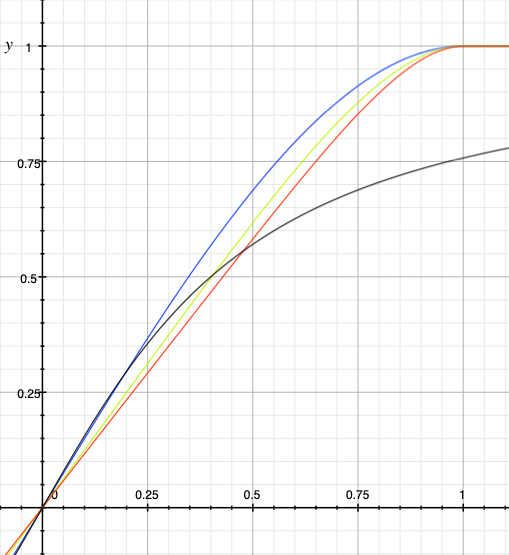In our section on amplitude, saturation using a cubic polynomial was shown. Alternatively polynomials of larger degree than 3 can be used. Consider the following:
y = -0.25x^5 + 1.25x y = -0.16666x^7 + 1.16666xThe advantage of these higher degree functions is that the signal remains undistorted at larger amplitudes, and also that the gain (the slope of the saturation function) is closer to one. The disadvantage is that distortion appears more quickly when the signal reaches the saturation point.

From the plot above, the atan saturation is shown to be less linear at lower signal values. On the other hand, it goes much more slowly into saturation. For this reason, many find it to sound “warmer” than the polynomial functions.
These saturation functions are more generally known as transfer functions, or and in synthesis they are known as waveshapers. Waveshapers can be used to distort a waveform in musical ways. For instance, brass synthesis often uses a saturation waveshaper, as it makes the tone brighter when it gets louder.
Any arbitrary shape can be used in a waveshaping transfer function, and certain early digital synthesizers (Buchla 400, Buchla Touché) did just this. Discontinuous functions have been used to emulate certain fuzz pedals, or to create decimation effects (aka bitcrushing). In the next few sections we will look at a few of the types of waveshaping.
